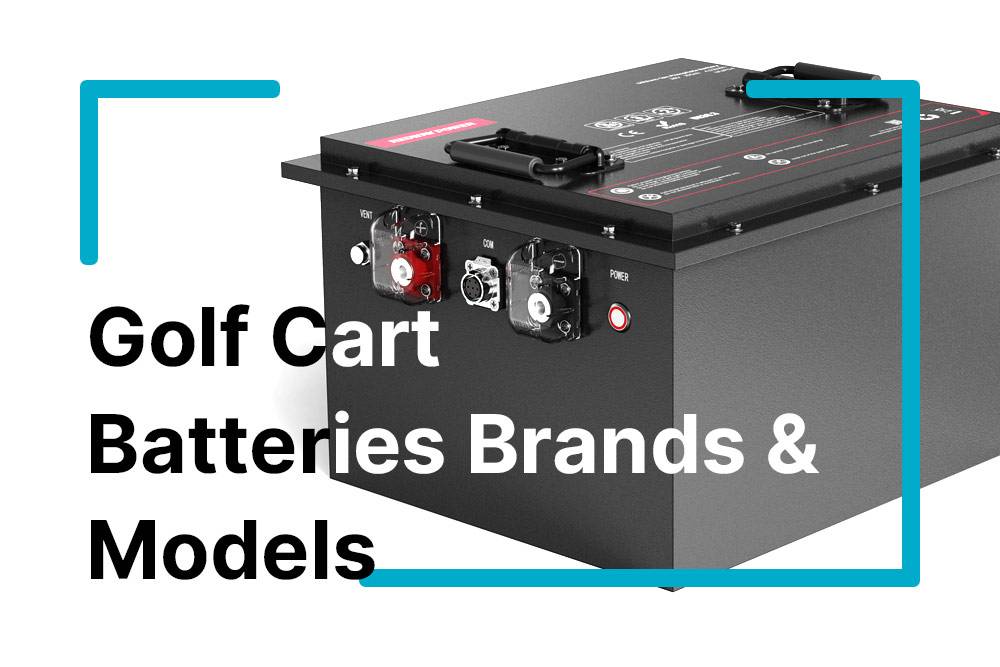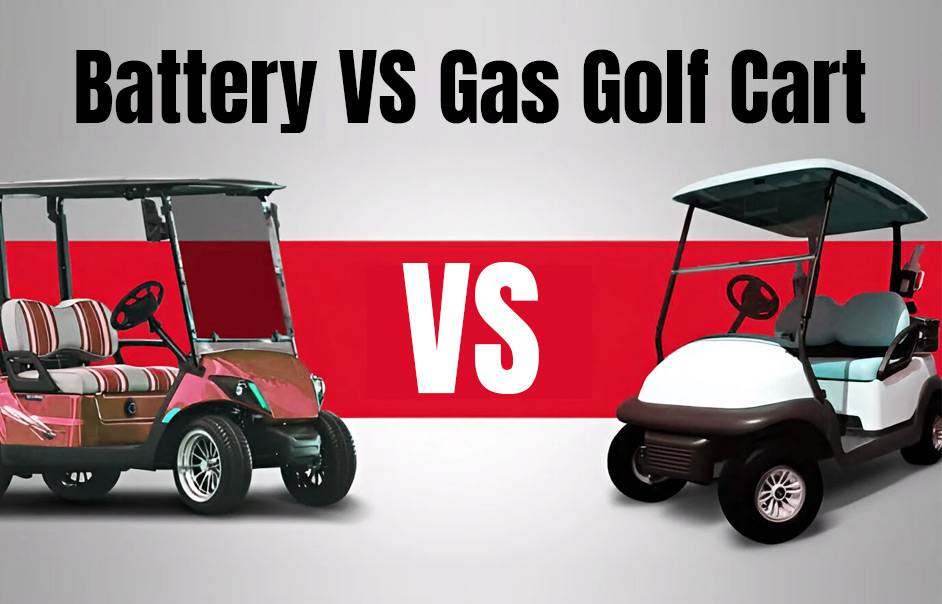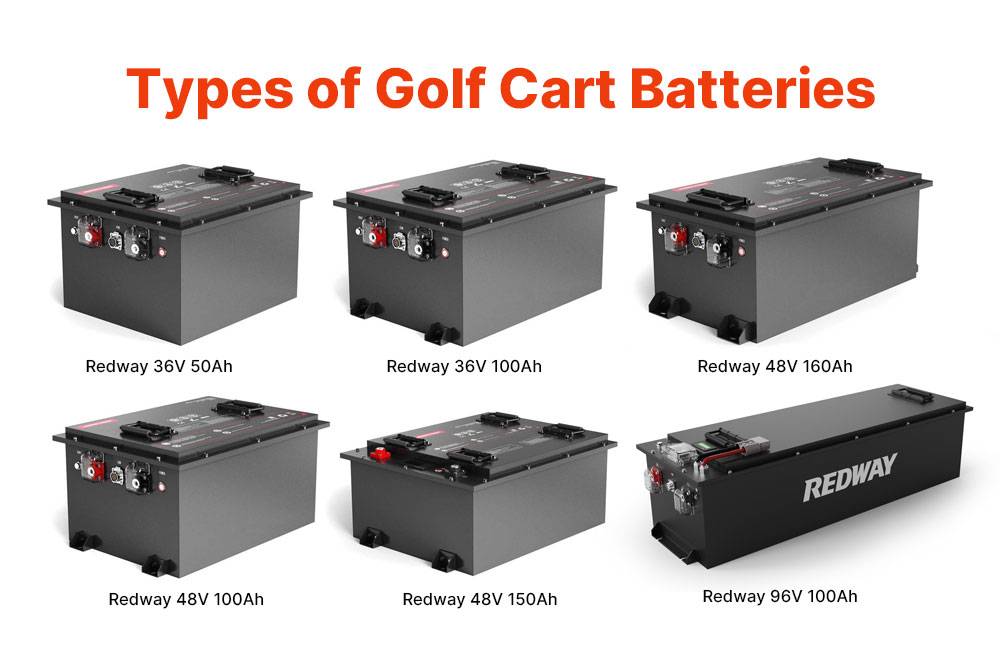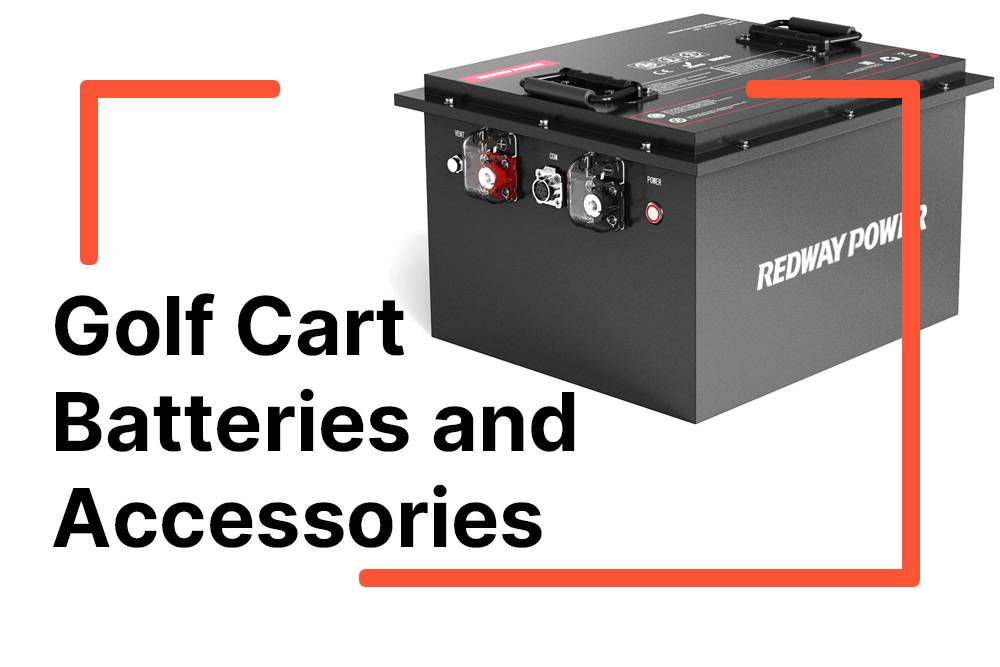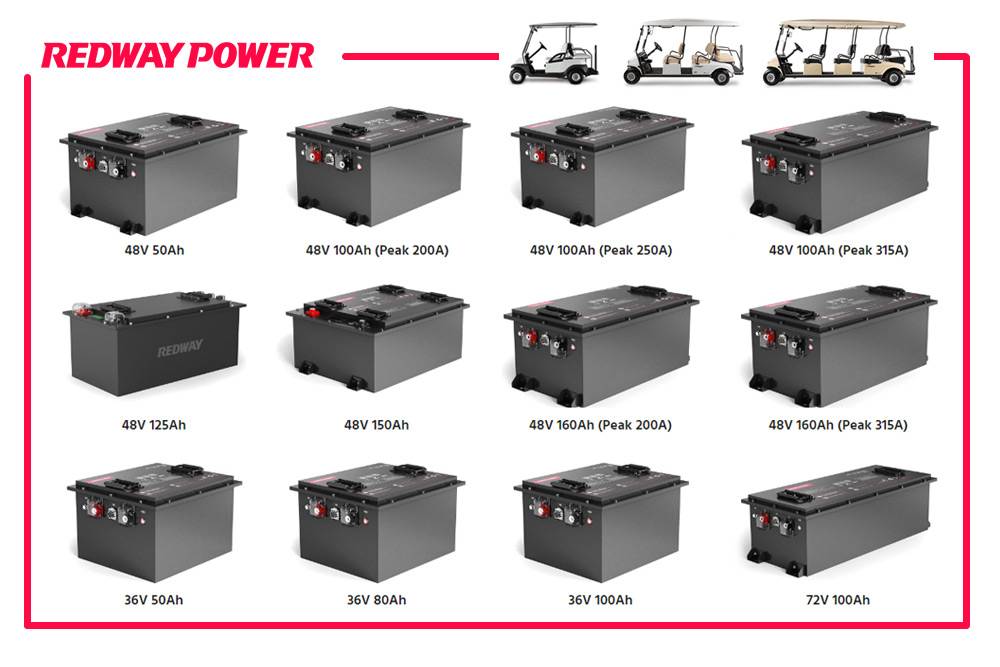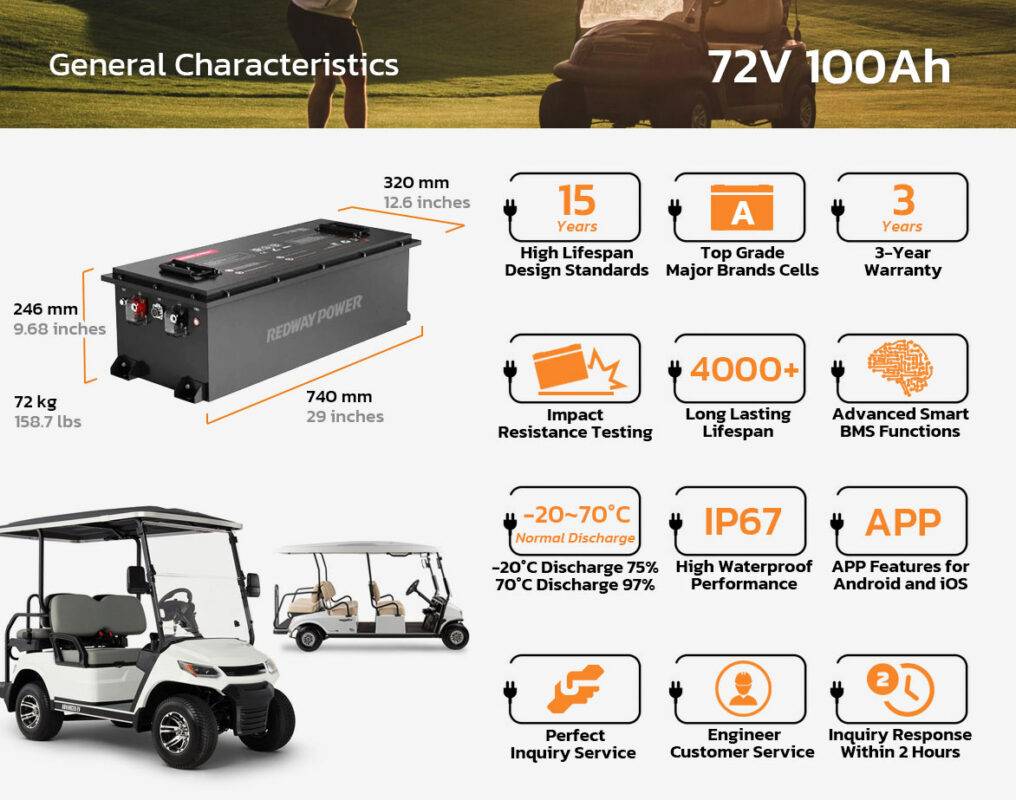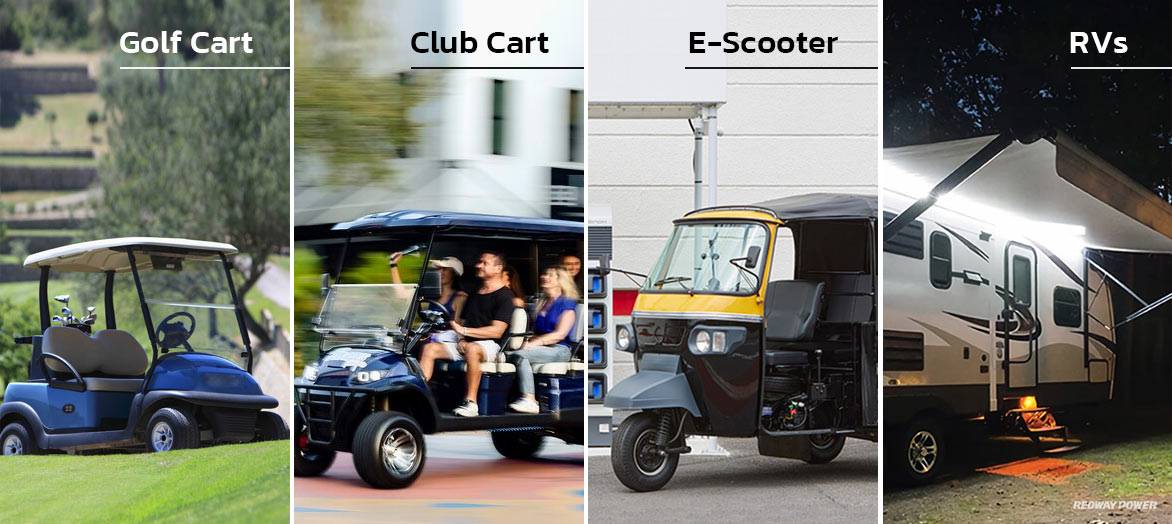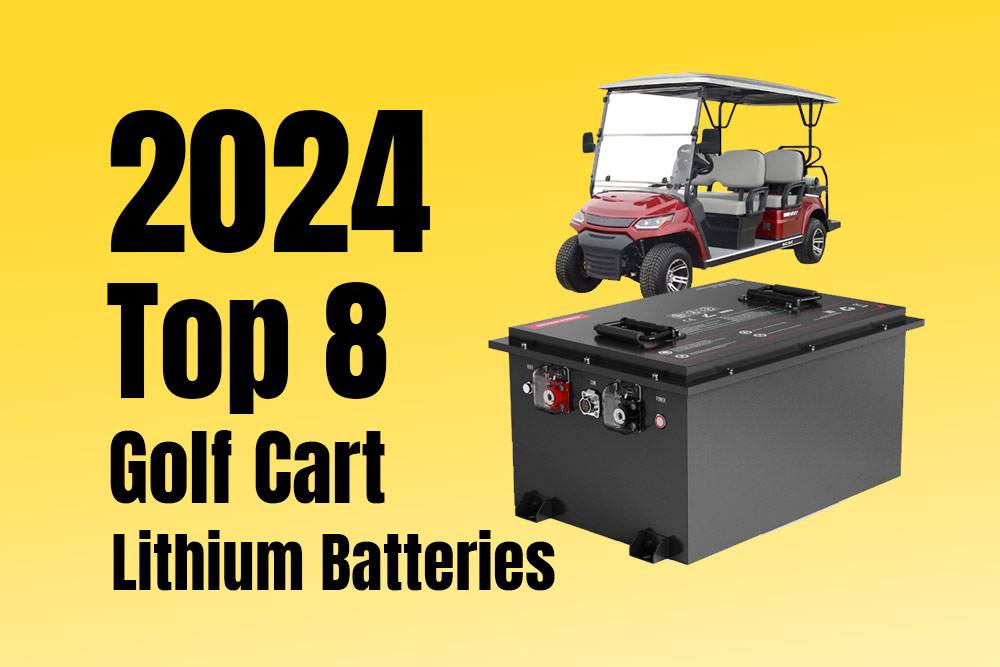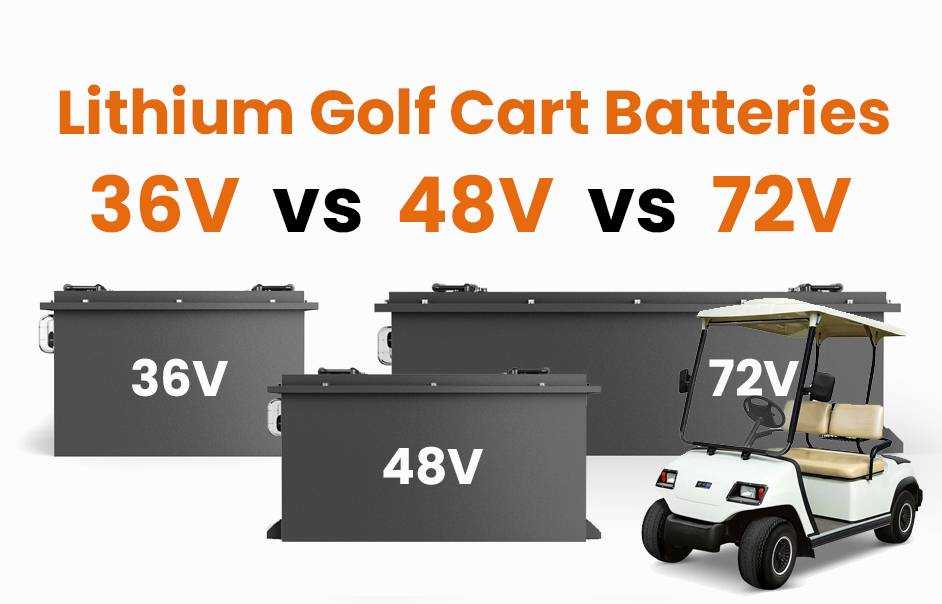Golf cart batteries are a crucial component for the performance and reliability of electric golf carts. They come in different voltages, such as 6V, 8V, and 12V, each designed to suit various golf cart models and energy needs. With the advancement in technology, many brands now offer lithium-ion options alongside the traditional lead-acid types, providing a lightweight and maintenance-free alternative.
Renowned brands like Trojan and Universal Power Group are at the forefront, offering a range of batteries that promise durability and long cycle life. Certain models, such as the Universal Power Group UBGC8 8 Volt 200 AH Battery, are favored for their solid performance. Meanwhile, Trojan’s T-1275 12V 150Ah Battery is highly regarded for its reliability in 12-volt applications. This diversity in battery types and specifications allows golf cart owners to select the optimal power source for their vehicle based on performance requirements and budget considerations.
Choosing the right battery brand and model can significantly impact the efficiency and usability of a golf cart. It involves assessing factors like battery life span, charge holding capacity, and the environmental conditions under which the cart operates. The best golf cart batteries fuse quality construction with technological advancements to keep golf carts running smoothly on the greens and beyond.
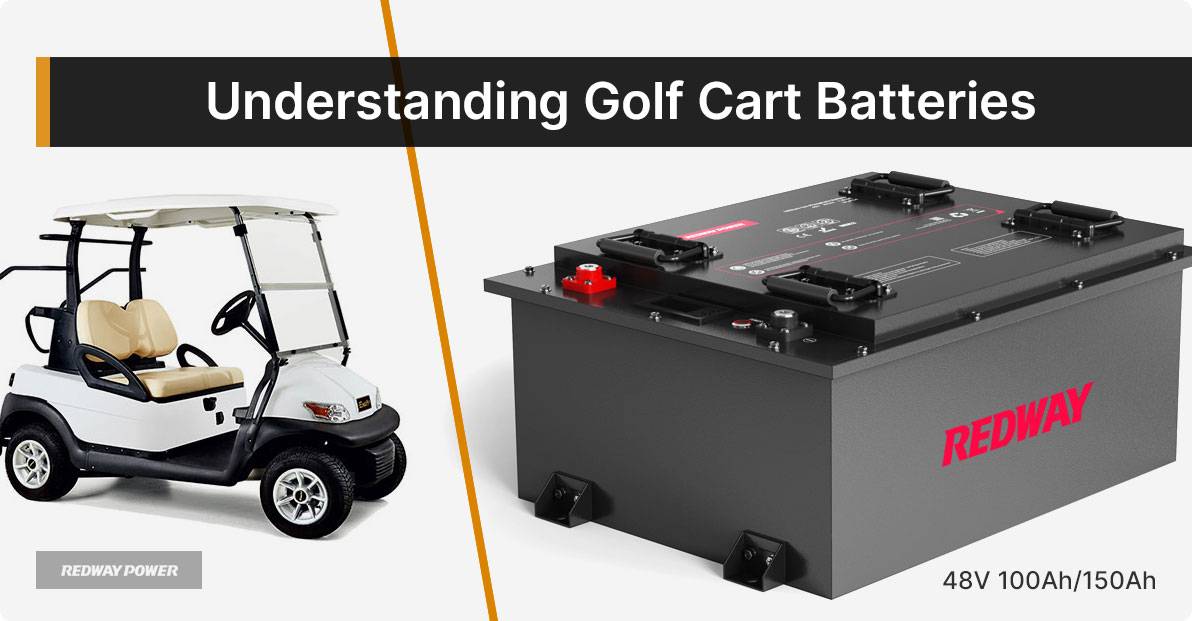
Understanding Golf Cart Batteries
When it comes to golf cart batteries, it’s essential to grasp the differences in battery types and their specifications such as voltage, capacity, and charging options to make informed decisions about maintenance and longevity.
Battery Types
Golf carts typically use either lead-acid batteries or lithium-ion batteries. Lead-acid batteries have been the traditional choice for years, valued for their affordability and widespread availability. In contrast, lithium-ion batteries represent a newer technology that offers a longer lifespan and faster charging, albeit at a higher initial cost.
Voltage and Capacity Considerations
The voltage of a golf cart battery can vary significantly, typically ranging from 24 volts to 72 volts, depending on the design of the golf cart. The battery’s capacity, usually measured in ampere-hours (Ah), is indicative of how long it can run before needing to be recharged. Higher voltage and capacity are associated with longer range and more power for the golf cart.
Battery Life and Longevity
The battery life of a golf cart battery is determined by the number of charge cycles it can withstand before its capacity diminishes. Lead-acid batteries generally last between 500-1000 cycles, while lithium counterparts can last up to 2000 cycles. To maximize longevity, one must maintain proper water levels in lead-acid batteries and avoid deep discharges.
Charging Basics
Proper charging is critical for both lead-acid and lithium-ion batteries. They should be recharged after every use, and it’s vital to use the correct type of charger. Overcharging can reduce battery life, while consistently undercharging can lead to sulfation in lead-acid batteries, impairing their ability to hold a charge.
Selecting the Right Battery
Selecting the right golf cart battery is crucial as it directly impacts the performance and efficiency of the cart. The choice should center around specific power requirements, compatibility with the golf cart, and the maintenance the battery will need over its life cycle.
Factors Influencing Performance
The key factors influencing battery performance include:
- Capacity (Ah): Higher capacity batteries will generally have a longer run time per charge.
- Voltage: Ensuring the correct voltage is crucial as it must match the golf cart’s requirements.
- Construction Type: Batteries such as the widely recognized Trojan T-105 are flooded lead-acid and require regular maintenance, while AGM and LiFePO4 batteries offer maintenance-free solutions.
- Brand Quality: Reputable brands typically promise reliability and a long-lasting life cycle.
Assessing Compatibility and Power Requirements
Matching the battery to the golf cart’s specifications is essential. This includes:
- Voltage Compatibility: It must match the golf cart’s system; 6, 8, or 12-volt configurations are common.
- Physical Size: The battery should fit within the battery bay without modification.
- Terminal Type: The connectors on the battery must be compatible with the golf cart’s cables.
Details like the 225 amperage capacity rating for the Trojan T-105 are examples of specific information needed to ensure power requirements are met.
Maintenance and Efficiency
Efficiency and proper maintenance are intertwined. Consider:
- Maintenance Type: Flooded lead-acid batteries require regular watering and cleaning to maintain efficiency, whereas batteries like the OGRPHY 12V 100Ah LiFePO4 Battery offer lower maintenance with comparable efficiency.
- Charging Habits: Consistent charging extends battery life, while under or overcharging can significantly reduce it.
- Temperature Considerations: Extreme temperatures can affect both battery lifespan and performance.
By considering these points, one can ensure a well-suited and efficient battery selection for their golf cart.
Top Brands and Models
When it comes to powering golf carts, certain brands and models stand out for their reliability and performance. Among them, Trojan Battery Series is often praised for its deep-cycle lead-acid batteries, while recent advances have driven the popularity of lithium-ion options. A comparison of AGM and Flooded Lead-Acid batteries also showcases differing benefits relevant to golf cart enthusiasts.
Trojan Battery Series
- Trojan T-105: A prominent 6V deep-cycle flooded lead-acid battery known for its balance of performance and durability.
- Trojan T-875: Delivers consistent power with a design that’s focused on longevity, suitable for heavy-duty applications.
- Trojan T-1275: A 12V option recognized for its extended run time and ability to withstand numerous charge cycles.
Trojan batteries emanate credibility in the lead-acid market and are often synonymous with the best golf cart batteries.
Leading Lithium-Ion Options
Lithium-ion batteries are becoming increasingly common due to their lightweight, efficiency, and maintenance-free characteristics.
- Lynx Lithium Iron Phosphate LiFePO4 12V Battery: This model represents the cutting edge of lithium-ion technology for golf carts, offering a long lifespan and rapid charging.
Such lithium ion batteries are revolutionizing golf cart usage with significantly reduced weight and improved performance.
AGM and Flooded Lead-Acid Comparisons
- AGM Batteries: Known for their sealed design, AGM batteries are maintenance-free, resilient, and capable of delivering stable performance.
- Flooded Lead Acid Battery: Traditional and cost-effective, these batteries require regular maintenance but are valued for their dependability and proven track record.
While AGM batteries offer convenience, flooded lead-acid batteries remain a workhorse in the golf cart industry. It’s a decision between modern innovation and time-tested reliability.
Cost Considerations
When purchasing golf cart batteries, buyers should evaluate not only the initial cost but also the long-term financial commitment. Maintenance expenses and overall value should factor into the decision to ensure affordability and value for money.
Initial Purchase Price
The initial purchase price of golf cart batteries can vary significantly based on type and brand. For instance, lithium-ion batteries come at a higher upfront cost compared to lead-acid types due to their longevity and performance. For a specific idea of current pricing, the Big Horn Golfer Pricing Guide outlines how such costs are affected by capacity and brand reputation.
Maintenance Costs
Beyond the purchase, maintenance costs play a crucial role in the total cost of ownership of a golf cart battery. Regular maintenance activities can include cleaning, watering (for lead-acid batteries), and proper charging. Lead-acid batteries typically incur higher maintenance expenses over time in contrast to low-maintenance lithium-ion options, which is a factor to be carefully considered for long-term value.
Total Value and Affordability
Assessing total value and affordability involves looking at the warranty period and the expected lifecycle of the batteries. A longer warranty, like those offered by reputable brands, may suggest potential savings on future repairs or replacements. The overall value is also tied to the battery’s lifecycle, where options such as the Trojan T-105 6 Volt battery are noted for a substantial number of charge cycles, thereby enhancing their cost-effectiveness over time.
Installation and Replacement Procedures
The process of installing a new golf cart battery or replacing an old one is crucial for maintaining optimal performance. This section explains the specific steps for installation and the necessary considerations regarding replacement and recycling protocols.
Installing Your New Battery
To install a new battery in a golf cart, one must first ensure the correct battery type is selected for their specific model. A golf cart typically requires a set of 6-volt, 8-volt, or 12-volt batteries connected in series to achieve the necessary 36 or 48 volts. To start the installation process, one should:
- Power off the golf cart and remove the keys.
- Remove the battery hold-downs and disconnect the battery cables, starting with the negative cable. Wear protective equipment to avoid contact with corrosive materials.
- Carefully remove the old batteries and clean the battery tray with a baking soda and water solution to neutralize any acid residue.
- Place the new battery in the battery tray, ensuring the orientation of terminals is correct for reconnection.
- Reconnect the cables, starting with the positive cable, and secure the hold-downs.
- Double-check all connections for security and proper polarity before turning on the golf cart.
When to Replace and How to Recycle
Golf cart batteries should be replaced when they exhibit signs of diminished performance, such as limited range, slower speeds, or difficult charging. Here are three signs indicating the time for a replacement:
- Swollen or damaged battery cases: Visible deformation usually suggests overcharging or internal damage.
- Corroded terminals or cables: Excessive corrosion impedes electric conductivity, reducing efficiency.
- Non-functional after a full charge: If a battery cannot hold a charge, it is no longer serviceable.
Upon replacing, it’s essential to recycle the old batteries responsibly. Lead-acid batteries are hazardous and should be taken to a certified recycling center. They contain lead and acid that can be reclaimed and repurposed, preventing environmental contamination and conserving resources.
Battery Maintenance and Care
Maintaining golf cart batteries involves routine care measures such as cleaning, electrolyte level checks, and appropriate charging techniques to ensure optimal performance and longevity.
Routine Cleaning
To ensure the longevity of golf cart batteries, routine cleaning is vital. One should clean the battery terminals and exterior surfaces to prevent corrosion. A mixture of baking soda and water can be applied with a brush to neutralize acid and then rinsed off with water, ensuring the batteries are dry afterward.
Electrolyte Level Management
Proper electrolyte levels are essential for battery operation. The electrolyte level should be checked regularly and maintained with distilled water, avoiding tap water due to minerals that can degrade battery performance. Always keep the levels between the minimum and maximum marks on the battery casing.
Charging Practices and Storage
Effective charging practices include using the right charger type for the battery model and charging after every significant use. Batteries should not be left discharged for extended periods as it can affect their lifespan. When storing batteries, they should be fully charged and kept in a cool, dry place to prevent capacity loss. Regular charging times and schedules are crucial for maintaining golf cart batteries and can influence how long golf cart batteries last.
By adhering to these specific maintenance practices, one can prolong the health and functionality of their golf cart batteries.
Enhancements and Accessories
Enhancing a golf cart’s battery system and accessorizing for performance can range from upgrading to higher voltage systems to adding on smart chargers and maintenance tools. These additions ensure that the vehicle operates at peak efficiency and prolongs the lifespan of the batteries.
Upgrading Your Golf Cart’s Power System
Upgrading the power system of a golf cart to a 48v or 72v setup from a standard 36v can significantly boost performance. This typically involves replacing the existing battery pack with more powerful options, such as lithium batteries that offer a longer lifespan and require less maintenance. Upgrades also often entail installing a new motor controller compatible with the increased voltage to ensure safe and effective operation.
Utilizing Battery Accessories for Optimal Performance
When it comes to maintaining and maximizing the performance of golf cart batteries, accessories play a key role. A high-quality smart charger is paramount; it can adjust the charge to suit the battery’s condition, preventing overcharging and undercharging. Essential accessories also include voltage reducers and battery meters, which can help maintain stability in the power system. For instance, a voltage reducer is crucial when a 48v system powers 12v accessories, ensuring that all components receive the correct voltage.
List of Recommended Accessories:
- Smart chargers for efficient battery management
- Voltage reducers to stabilize accessory power
- Battery meters for real-time voltage monitoring
Utilizing these accessories helps golf cart owners keep their batteries in top condition and enables a more enjoyable and reliable golf cart experience.
Understanding Environmental Impact
When considering the environmental impact of golf cart batteries, it’s critical to compare the sustainability of lead-acid batteries to lithium-ion ones, as well as the ways energy efficiency and waste reduction contribute to eco-friendly performance.
Lead-Acid versus Lithium-Ion Sustainability
Lead-acid batteries, while traditionally popular for their low initial cost and reliable energy output, pose significant environmental concerns. They are prone to releasing toxic lead into the environment if not properly recycled, and their heavier weight and lower energy density require more energy over time to achieve the same performance as alternative battery types. In contrast, lithium-ion batteries are gaining recognition for their longer life span, lighter weight, and ability to maintain consistent voltage levels, resulting in less waste and a reduced environmental footprint.
Energy Efficiency and Waste Reduction
Energy efficiency in golf carts is primarily gauged by how effectively they convert stored electricity into motion while minimizing energy loss. Lithium-ion batteries offer more efficient performance than lead-acid batteries due to their higher energy density and capacity to recharge quickly, leading to less energy waste over time. To further support waste reduction, the adoption of sustainable practices such as recycling programs and the use of renewable energy sources for charging can significantly reduce a golf cart’s overall environmental impact.
Comparative Analysis
In this section, a meticulous comparison of golf cart batteries is conducted, examining the nuances in weight, amperage, charge time, and run time, essential for informing the best selection suited to one’s needs.
Comparing Weight and Amperage across Different Models
The weight of a golf cart battery can significantly affect the vehicle’s performance. Lighter batteries can lead to improved efficiency but may not always offer the same energy output as heavier counterparts. For instance, the Trojan T-105 6V Batteries, known for their reliability, weigh in at approximately 62 pounds and provide a substantial 225 amperage capacity. In contrast, the Lynx Lithium Iron Phosphate LiFePO4 12V Battery presents a lighter option with the advantage of lithium technology.
- Trojan T-105 6V Battery: Weight – 62 lbs | Amperage – 225 Ah
- Lynx LiFePO4 12V Battery: Weight – Not Specified | Amperage – Not Specified
Evaluating Charge Time and Run Time
Charge time and run time are pivotal metrics that dictate the operational effectiveness of a golf cart battery. Longer run times minimize the frequency of charges, thus extending the cycle life of the battery. Lead-acid batteries tend to have longer charge times but also offer considerable run times. The US2200 XC2 6-Volt Golf Cart Battery is a good representation of this balance, boasting extensive run times that golfers appreciate. Meanwhile, lithium-ion batteries like the OGRPHY 12V 100Ah LiFePO4 Battery offer shorter charge times and consistent power delivery over their life span.
- US2200 XC2 6-Volt Battery: Charge Time – Not Specified | Run Time – Extended
- OGRPHY 12V 100Ah LiFePO4 Battery: Charge Time – Reduced | Run Time – Consistent Performance
The analysis above provides insights into the specifications of varied golf cart batteries, considering their impact on the usage and operational demands of golf carts.
In-Depth Brand Focus
In this focused examination of golf cart battery brands, the advancements and benefits brought by leading models and technologies including Trojan Batteries and AGM technology will be prominently discussed.
Trojan Battery Deep Dive
Trojan Battery Company stands out in the golf cart battery market for its reliability and the quality of its products like the Trojan T-105. This particular model is a flooded lead-acid battery boasting an impressive 225 amp-hour capacity. It’s designed for deep-cycle use, making it ideal for the repeated charging and discharging demands of golf cart use. Customers can expect durable batteries that charge quickly and exhibit long-lasting performance.
Lithium Battery Innovations
Recent advancements in golf cart batteries have spotlighted the shift towards Lithium Battery Innovations. Unlike traditional lead-acid batteries, lithium batteries are lighter and typically offer a longer lifespan, which can translate into fewer replacements and potentially lower costs over time. They also tend to have a higher energy density, meaning golf carts can cover more ground before needing a recharge.
AGM Battery Advantages
AGM Battery technology, short for Absorbent Glass Mat, presents a significant step forward with its maintenance-free design. The Lifeline Marine AGM is a notable example, showcasing the practical AGM Advantages. These batteries are sealed, eliminating the need for water top-ups and reducing the risk of leaks. With a sturdy absorbent glass mat that holds the electrolyte in place, they offer enhanced vibration resistance, making them a robust choice for the mobile environment of a golf cart.
Purchasing Resources
When considering the purchase of golf cart batteries, it is crucial to focus on reputable brands that offer reliable warranty and support options. The market includes well-known names like Duracell, Crown Battery, and Interstate, known for their quality and customer service.
Where to Buy Reputable Brands
Duracell, Crown Battery, and Interstate are some of the leading brands in the golf cart battery space. Consumers can purchase batteries from these brands through various authorized dealers and retail outlets. Online marketplaces like Amazon provide a broad selection, including the well-regarded T875 model by Trojan, which is known for its durability and performance.
- Authorized Dealers: Often offer the advantage of personalized service and expert installation.
- Online Retailers: Provide convenience and frequently feature customer reviews, which can aid in the decision-making process.
Additionally, some brands operate their own direct sales channels through company websites, ensuring customers receive authentic products coupled with after-sale support.
Warranty and Support Information
Warranty and support are vital considerations as they guarantee product reliability over time. Most reputable brands, such as Crown Battery and Interstate, offer substantial warranties that cover potential defects and performance issues.
- Crown Battery: Known for comprehensive warranty policies, which reflect their confidence in product longevity.
- Interstate: Provides a competitive warranty, emphasizing their commitment to customer satisfaction.
Customers should read warranty terms carefully to understand what is covered. Information about support services is typically outlined on the brand’s website or available through their customer service departments. For models like the T875, the manufacturer’s warranty can often be claimed through the retailer or directly with the manufacturer, ensuring that support is always within reach.
Frequently Asked Questions
In this section, we will address some common inquiries about golf cart batteries, focusing on brands, sizing, models, and maintenance for optimal performance.
What are the top-performing brands for 48V golf cart batteries?
Top-performing brands for 48V golf cart batteries include names like Trojan, which is renowned for its deep-cycle batteries, and Universal Power Group with their reliable AGM designs.
How can I determine the correct battery size for my golf cart?
To determine the correct battery size for a golf cart, one must confirm the voltage and amp-hour requirements specified in the golf cart’s manufacturer manual, ensuring compatibility and adequate power.
Which models of batteries are recommended for Yamaha golf carts?
For Yamaha golf carts, models such as the Trojan T-1275 12V 150Ah battery are widely recommended for their balance of performance and longevity.
What are the longest-lasting battery options for golf carts?
The longest-lasting battery options for golf carts include lithium-ion types like the Lynx Lithium Iron Phosphate LiFePO4 12V battery, known for extended lifecycles and consistent power output.
What are the most common batteries used in EZGO golf carts?
In EZGO golf carts, the most common batteries are the 6V deep-cycle lead-acid types, with brands like Weize offering high-capacity options for longer runtimes.
How should I choose the best golf cart batteries for frequent use?
When selecting the best golf cart batteries for frequent use, factor in durability, performance specs like amp-hour ratings, and customer reviews, prioritizing batteries designed for deep cycling and high frequency charging.

